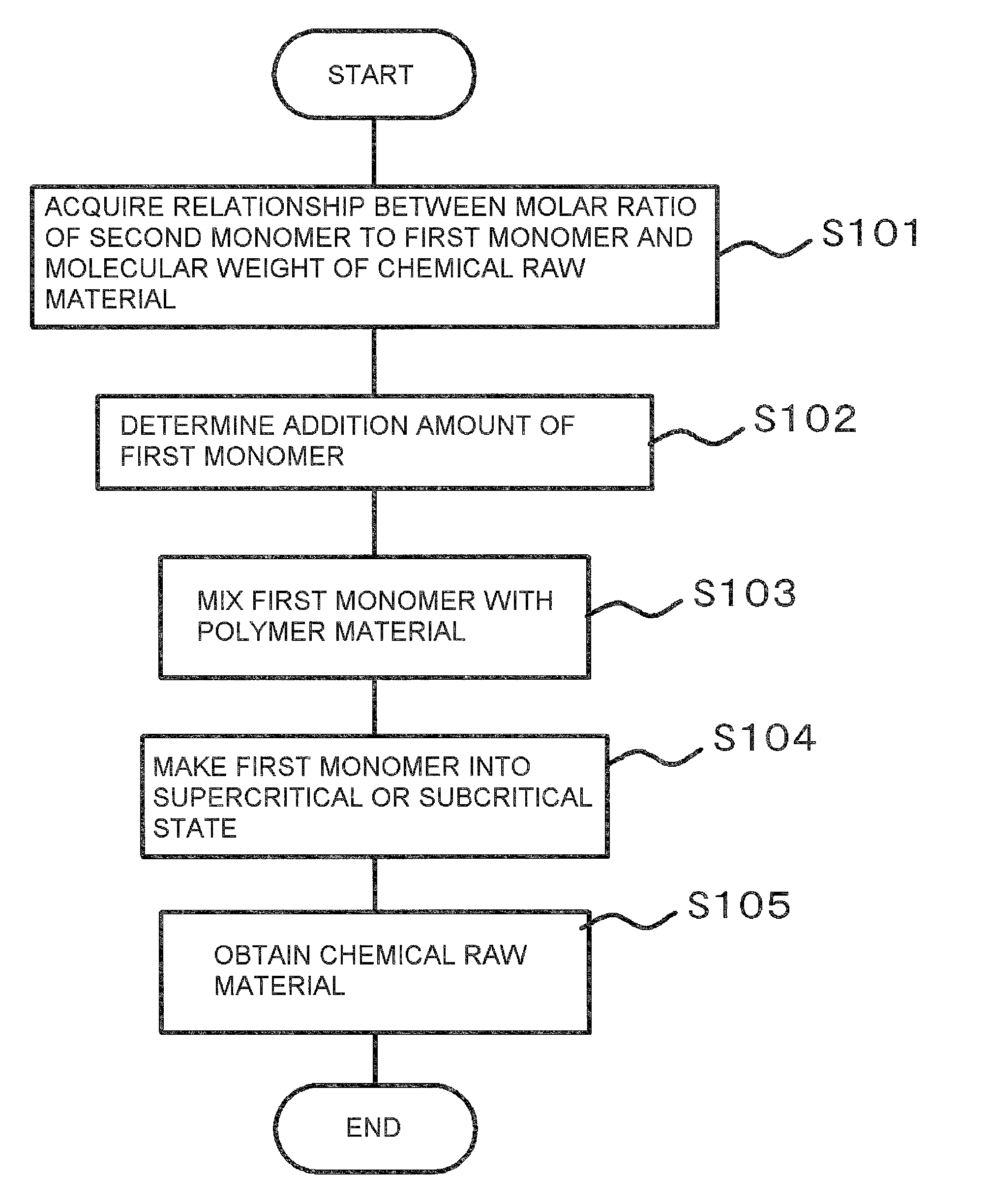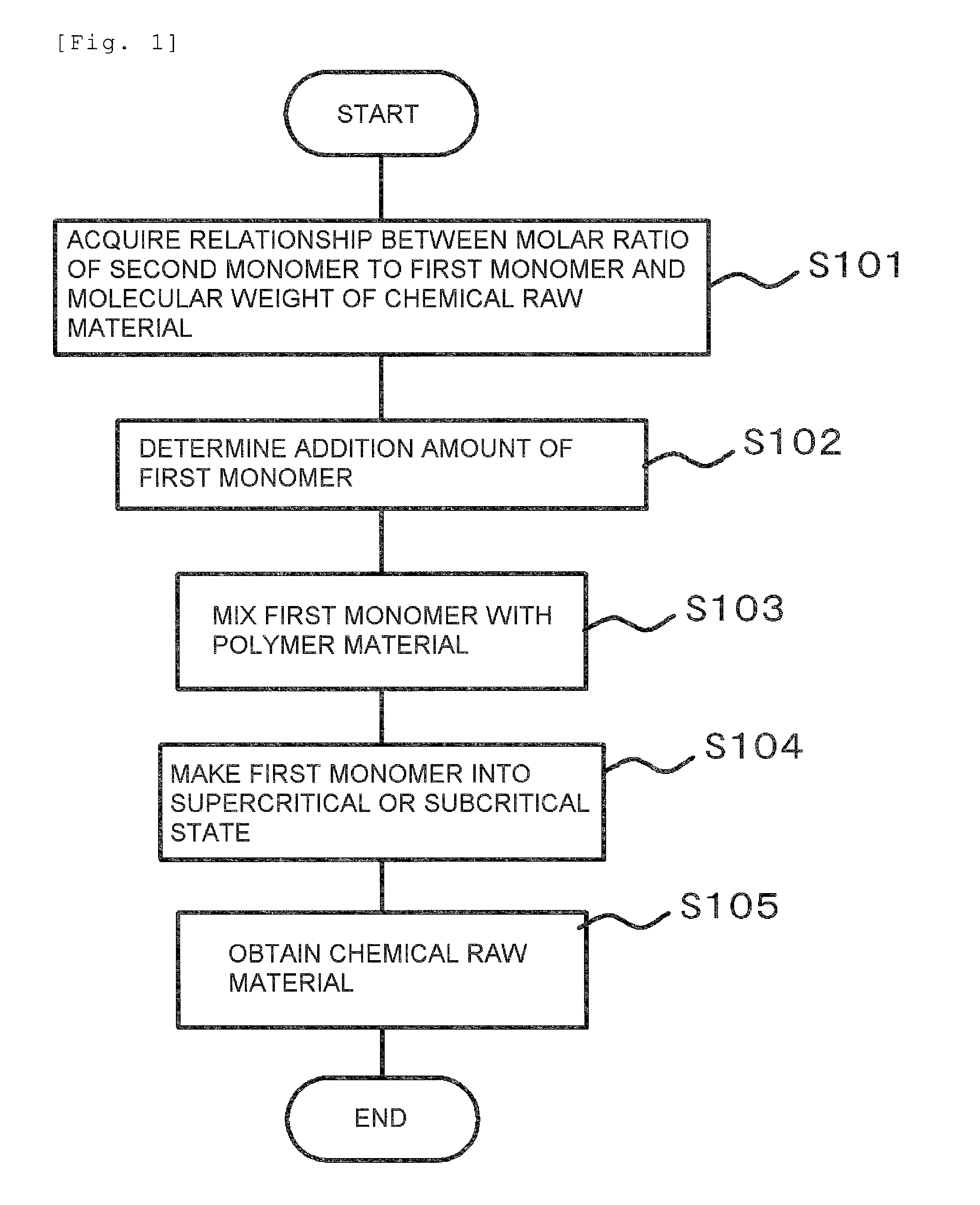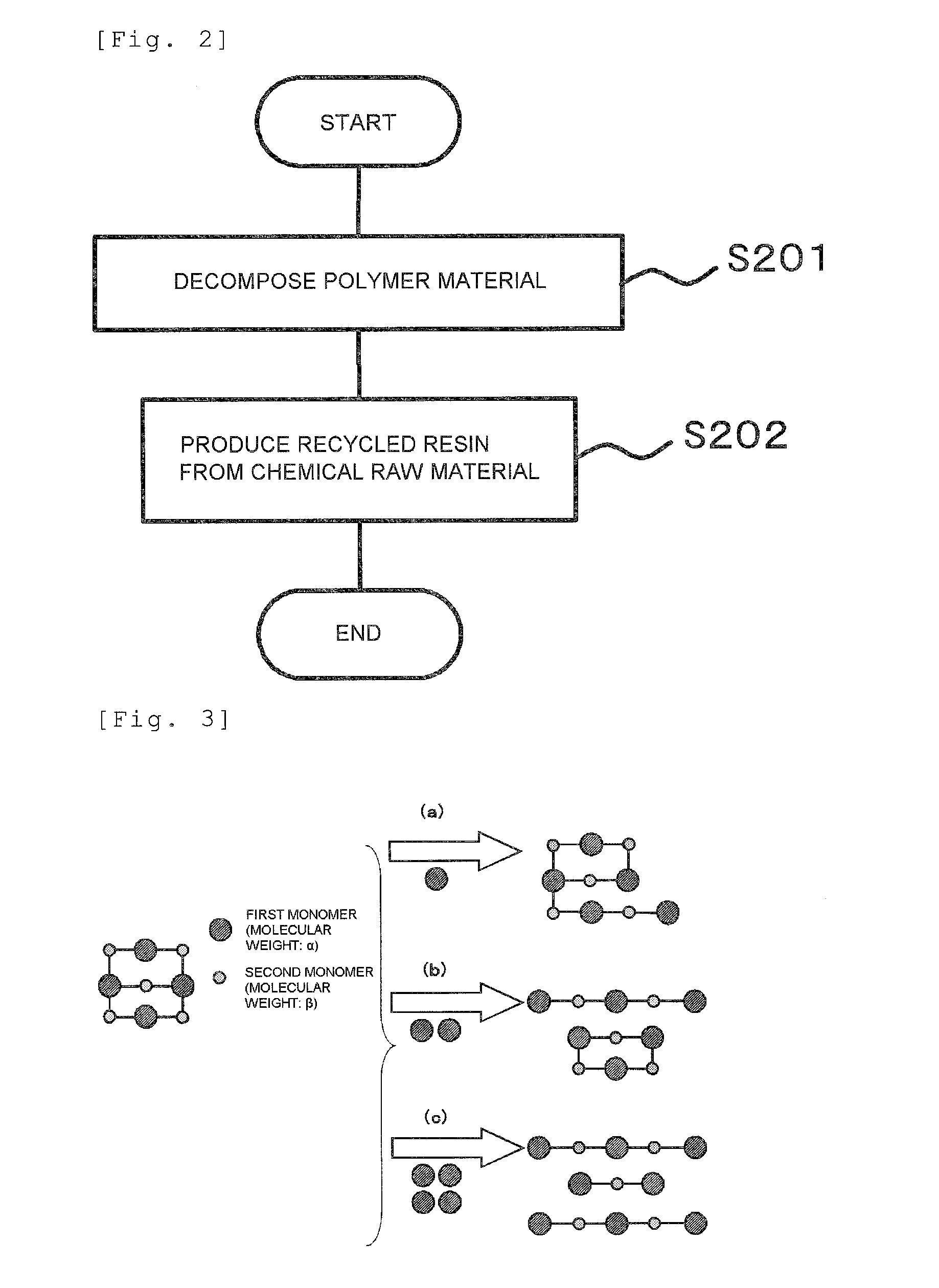Method for decomposing polymer material, method for producing recycled resin, and method for recovering inorganic filler
a polymer material and decomposition technology, applied in the direction of silicon oxides, chemistry apparatuses and processes, silicon compounds, etc., to achieve the effect of reducing environmental load, high efficiency of decomposition processing, and improving yield ra
- Summary
- Abstract
- Description
- Claims
- Application Information
AI Technical Summary
Benefits of technology
Problems solved by technology
Method used
Image
Examples
first embodiment
[0084]This embodiment relates to a method for decomposing a polymer material by chemically decomposing a resin component in a mixture of the polymer material containing the first monomer and the second monomer with the first monomer or a derivative of the first monomer to produce a chemical raw material to be a raw material for recycling the polymer material. In the present invention, the term “chemical raw material” refers to a decomposition product of a resin component comprising monomers, oligomers or a mixture thereof.
[0085]FIG. 1 is a flow chart illustrating a method for decomposing a polymer material of the embodiment. As shown in FIG. 1, first, a relationship between a proportion of number of molecules (amount of substance) of the second monomer to number of molecules (amount of substance) of the first monomer in a reaction system for decomposing the resin component and a molecular weight of the chemical raw material produced in the reaction system is acquired in advance (S10...
second embodiment
[0143]FIG. 5 is a flow chart illustrating a method for recovering an inorganic filler of the embodiment. The method for recovering an inorganic filler comprises chemically decomposing a resin component composed of a first monomer and a second monomer in a mixture of a polymer material containing the resin component and an inorganic filler with the first monomer or a derivative of the first monomer (S301);
[0144]removing the resin component decomposed from the mixture of the polymer material with the first monomer or the derivative of the first monomer to calculate a residual ratio of the resin component undecomposed (S302);
[0145]acquiring a relationship in advance between a proportion of number of molecules of the second monomer to number of molecules of the first monomer in a reaction system for decomposing the resin component and the residual ratio calculated (S303);
[0146]determining an addition amount of the first monomer to be added to the polymer material based on the above-stat...
third embodiment
[0171]FIG. 7 is a flow chart illustrating a method for producing a recycled resin of the embodiment. In the method for producing a recycled resin, the recycled resin is produced by chemically decomposing a resin component composed of a first monomer and a second monomer in a mixture of a polymer material containing a resin component with the first monomer or a derivative of the first monomer, and mixing the resin component decomposed with the second monomer or a derivative of the second monomer. The method comprises acquiring a relationship in advance between a proportion of number of molecules of the second monomer to number of molecules of the first monomer in a reaction system for producing the recycled resin from the resin component decomposed and a molecular weight of the recycled resin (S401);
[0172]determining an addition amount of the second monomer or the derivative of the second monomer to be added to the decomposed resin component based on the above-stated relationship (S4...
PUM
| Property | Measurement | Unit |
|---|---|---|
| molecular weight distribution | aaaaa | aaaaa |
| critical temperature | aaaaa | aaaaa |
| critical temperature | aaaaa | aaaaa |
Abstract
Description
Claims
Application Information
 Login to View More
Login to View More - R&D
- Intellectual Property
- Life Sciences
- Materials
- Tech Scout
- Unparalleled Data Quality
- Higher Quality Content
- 60% Fewer Hallucinations
Browse by: Latest US Patents, China's latest patents, Technical Efficacy Thesaurus, Application Domain, Technology Topic, Popular Technical Reports.
© 2025 PatSnap. All rights reserved.Legal|Privacy policy|Modern Slavery Act Transparency Statement|Sitemap|About US| Contact US: help@patsnap.com



